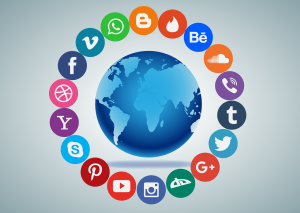Theoretically, the decision made by many companies and big brands to use social media platforms as a means of customer service makes a lot of sense. Many, if not all, of these companies are already using social media for marketing purposes, so the customer service platform is already proven to be multi-faceted and useful. On top of that, statistics show that 75% of all internet users are on some form of social media, so it’s a natural conclusion that these platforms might be the best direct line for customer service.
Companies are right to prioritize customer service performance in today’s market. Surveys have shown that customer experience is now the number one area of focus for marketers and the biggest area of inter-business competition. If that’s not enough, it has been revealed that 82% of customers will drop a company’s services after a bad customer service experience. In such an intensely competitive market space, the move toward social media-based customer service seems not just sensible, but even wise and progressive, if not downright necessary.
There’s only one problem, though: Customer service through social media is ineffective.
Over the summer of 2015, NICE Systems and Boston Consulting Group (BCG) conducted a survey across five countries to gauge the various influences on different types of customer service. The results of the survey were far-reaching, but perhaps one of the most important findings was the overwhelming evidence against social media-based customer service platforms. Indeed, in spite of many major companies’ push to utilize social media-based customer service, the study shows that only 29% of people surveyed said they’d used social media platforms for customer service, a drop from 36% in 2013. What’s perhaps even more surprising is the fact that traditional customer service platforms, namely a live representative on the phone or an Interactive Voice Response (IVR), were among the most popular forms of customer service, along with self-service on a company’s website, all of which reported uses of at least 60% of customers, in some cases reaching 82%.
While these results may be surprising given the clear popularity of social media among users, the general dissatisfaction with social media-based customer service actually has its roots in a number of valid reasons. First among those reasons is business’s relationships to social media platforms. As Andrew Meola points out for Business Insider, social media is meant to be accessed immediately. Part of its appeal is that users can have all the information they need right on their screens within seconds. Customer service relies on similar principles of speed and ease-of-use, but the numbers clearly show that something isn’t working, and customers often cite slow response time as their number one gripe against social media-based service.
The logical next question, then, is why? Why isn’t social media working for customer service? By its very nature, customer service comes with a lot of red tape. Customer service reps often have to walk customers through many steps to get an answer, and IVRs aren’t any faster. Customer service is all about making sure the company in question covers all its possible bases in the troubleshooting process. It has to walk that fine line of being meticulous enough to identify use cases and potential problems while also being flexible enough to thoroughly reach a broad audience of potential customers, and this process can take some time.
This view of customer service is where the disconnect with social media occurs. A person’s social media account is his or her personal space, which means that communication between two social media profiles is meant to feel like a very personal one-on-one exchange. Customer service, on the other hand, prioritizes building a versatile and professional funnel to be applied to a set pattern of wide-ranging queries. Such a setup simply does not work well when applied to the personal nature of social media. Many companies have tried to bridge that gap by being amiable, funny, and even coy in their customer service responses, but it very often just ends in them coming under fire for sassy answers or otherwise inappropriately interacting with customers, who really just want their questions answered quickly.
Instead of tailoring customer service to social media, companies need to work to provide excellent service within their own channels. Along with self-service on a company’s site, mentioned earlier as a favored option among users, another popular avenue of customer service according to the NICE-BCG survey was the mobile app for the relevant company. The same priorities, of course, still apply: namely making sure that the customer’s experience is seamless.
Closely intertwined with the idea of customer experience is, perhaps obviously, user experience. Though a design term, good user experience reaches beyond the traditional understanding of “design,” as it is all about directing a user’s path efficiently through your company’s materials. A company has much greater control over users’ pathways on their own websites and apps, so perhaps, unless social media has proven effective for your own company, a better alternative would be to shift the customer service experience entirely to your own website that has better UX and can solve the customers’ problems much more efficiently.
Customer service, though imperfect, is the access point for many customers. Let them contact you, and then guide their paths. Don’t open the floodgates and let users start tweeting at you mercilessly. You’ll both be happier if the steps to answering a customer’s question are quick and easy to follow.
Ellie Martin is co-founder of Startup Change group. Her works have been featured on Yahoo! , Wisebread, AOL, among others. She currently splits her time between her home office in New York and Israel.
